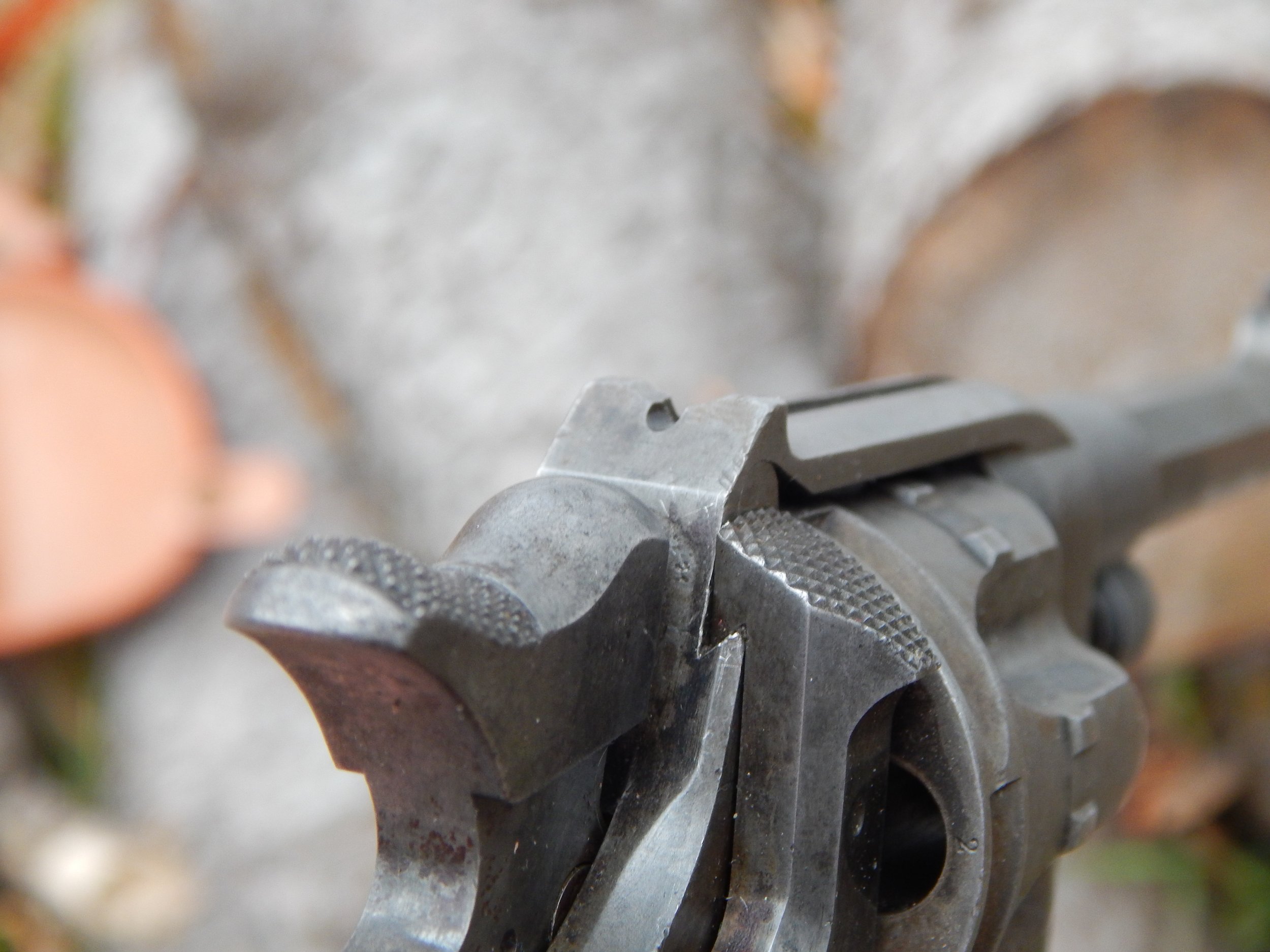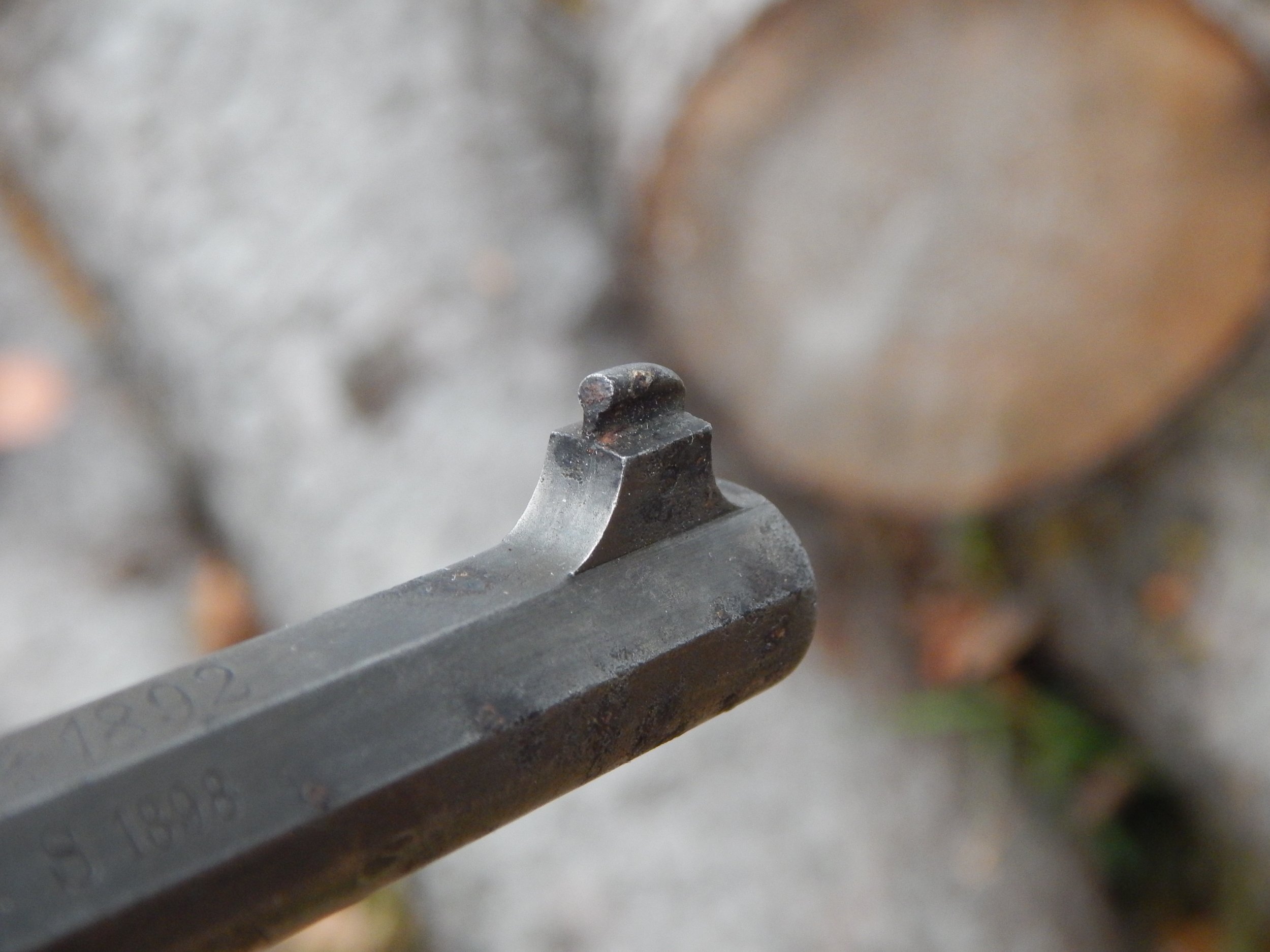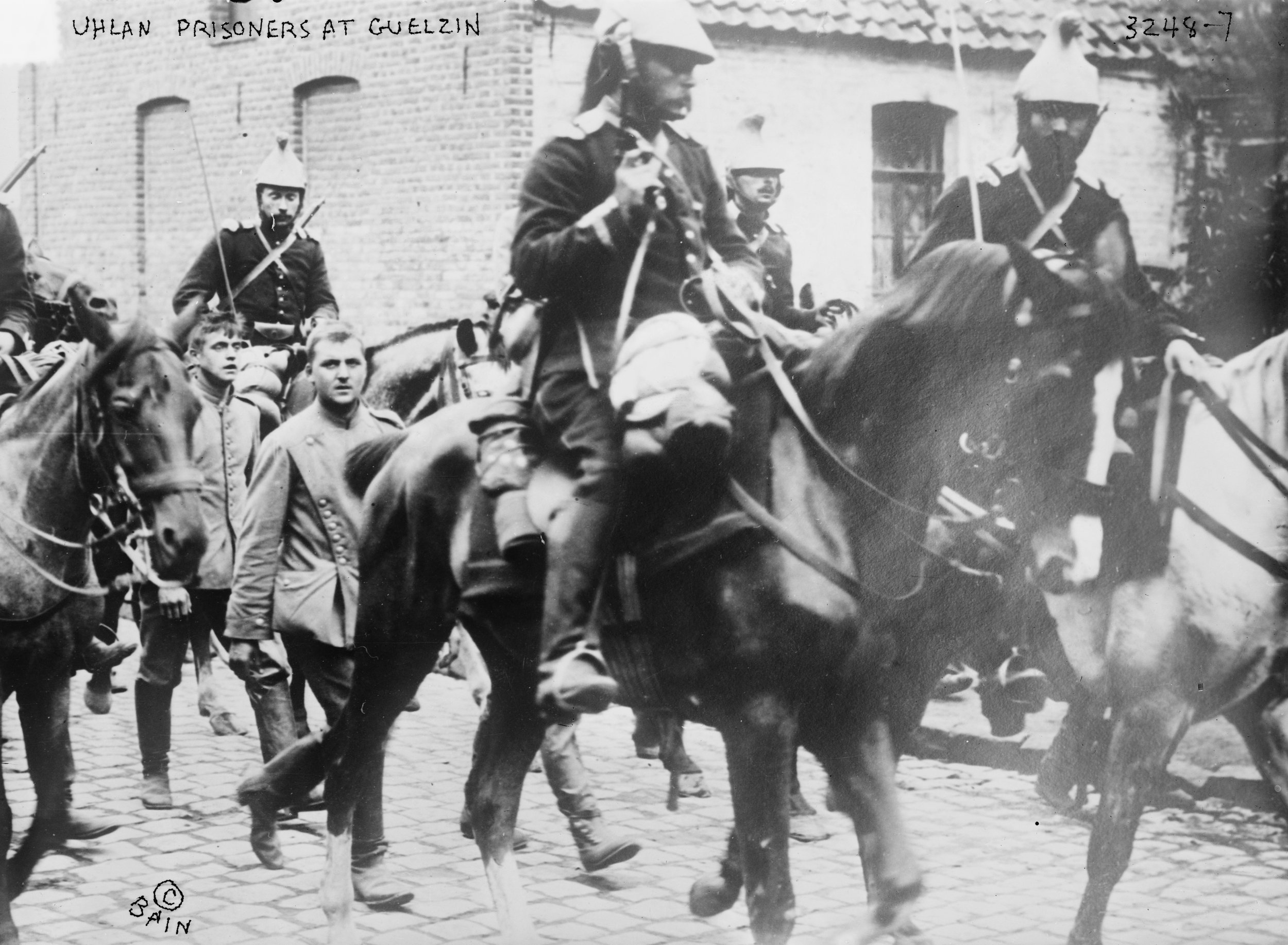Mle. 1892 “Lebel” Revolver
The first smokeless powder handgun adopted by France was an interesting revolver designed with cavalry in mind, but would serve on long after the demise of the horse soldier.
The History
In the aftermath of the disastrous Franco-Prussian War of 1870, the new French Third Republic looked to modernize its arsenal as quickly as possible. One result of this program was the adoption of the Mle.1873, commonly known as the Chamelot-Delvigne. This was a gate loading double action revolver chambered in an 11mm black powder cartridge, and although a fine weapon, a revolutionary development brewing in France in the mid 1880s would see it replaced.
The markings on the right side of the frame identify the manufacturer, MAS
That revolution was the smokeless Poudre B, which was fielded with the new Mle.1886 rifle, better known to history as the Lebel. The advanced new powder rendered every firearm in the world instantly obsolete, and with its adoption and standardization the French also looked to apply the same advancement to their handguns.
The markings atop the barrel consist of inspector’s proofs, the model designation, and the year of production, in this case 1898
The result was a double action revolver chambering a new, smokeless 8mm cartridge. This combined with the same rifling pattern as the Lebel rifle to allow for expedient production of barrels as well as the possibility of repurposing rejected rifle barrels for handguns. After an initial order of 5,000 pistols, kinks were worked out in both revolver and cartridge before full production could commence in 1893.
The grips of the revolver are made of checkered wood
This would become the standard service pistol of France in the two decades leading up to the Great War in 1914. Production was ramped up with the start of the conflict, but was eventually halted in 1915 in order to free up production lines for the more needed rifles. As a result the Mle. 1892 was augmented and eventually outnumbered significantly by the Spanish made “Ruby” automatic pistols.
A unique feature of the Mle.1892 is what appears to be a loading gate…
Production was resumed after the Armistice, and the Mle. 1892 would remain the official standard issue to the sidearm of the French Army until the introduction of the Mle. 1935 automatic pistols on the eve of the Second World War. Despite this, the old revolver would still soldier on through that conflict, only being fully retired in 1948.
Is in in reality a release for a swing out cylinder, opening on the right hand side
The Design
The Mle. 1892 is a full size service revolver, chambered in the 8mm French Ordinance cartridge. It has a conventional cylinder containing six cartridges, although the method of loading is somewhat novel. Despite appearances, what looks like a loading gate is in reality a release, allowing the cylinder to swing out to the right hand side. When opened, its simultaneous ejector can be actuated, working as expected. This odd choice of opening to the right rather than the left was a result of a desire to cater toward the cavalry, who would in theory switch the revolver to their non-dominant hand along with the reins in order to use the right hand for the finer operation of loading with revolver.
The ejector of the Mle. 1892 is a conventional star, although it is notably quite stout
Another interesting feature of the Mle. 1892 is its hinged sideplate. By loosening a single captive screw the sideplate can be swung open, hinging on the front of the trigger guard. This allows the left grip panel to be removed as well, fully exposing the lockwork of the pistol for cleaning and maintenance. This makes for an efficient system, while minimizing the risk of lost parts in the field.
The rounded notch rear sight of the Mle.1892
This Example
The example in the reference collection was manufactured in 1898, and like all martial Mle. 1892 revolvers, it was produced by the Manufacture d'armes de Saint-Étienne (MAS). The revolver as originally produced would have featured a high gloss blue finish with a straw finish on certain parts, such as the cylinder release lever and the trigger, but in this case the finish is almost entirely gone. It appears likely that this revolver went through a rearsenal program, which resulted in either a paint or parkerized finish being applied, which again is essentially gone. Despite this, it remains in mechanically good condition, with good timing and strong lockup.
The front sight is a rather unusual rounded post, more akin to those found on sporting rifles than a martial revolver
Opinions
The Mle. 1892 is an interesting revolver with a unique design. It is a comfortable and reasonably accurate shooter, with its pronounced sights and long grip mixing well with its mild cartridge. Despite this, the anemic nature of the 8mm Ordinance cartridge does not lend confidence in a battlefield situation, and the aforementioned loading system, while it may be good for mounted cavalry, is rather clumsy for dismounted troops.
The revolver opened for maintenance. Note the sideplate hinging on the front of the trigger guard
All in all, this is a fine and well made revolver, and an interesting historical piece but in the opinion of the author the semi-automatic Ruby, with its nine round magazine of comparable .32ACP cartridges, makes for a better choice for the trenches.
French cavalry escorting German prisoners early in the Great War. The cavalryman in the foreground carries his Mle.1892 at the ready
Observed Values and Frequency
Updated: February, 2024
AVERAGE VALUE (USD): $500 - $700
FREQUENCY: Rare
COLLECTOR’S NOTES: Antique (Pre-1898) examples often command a premium, production ammunition is available, but uncommon and expensive.











